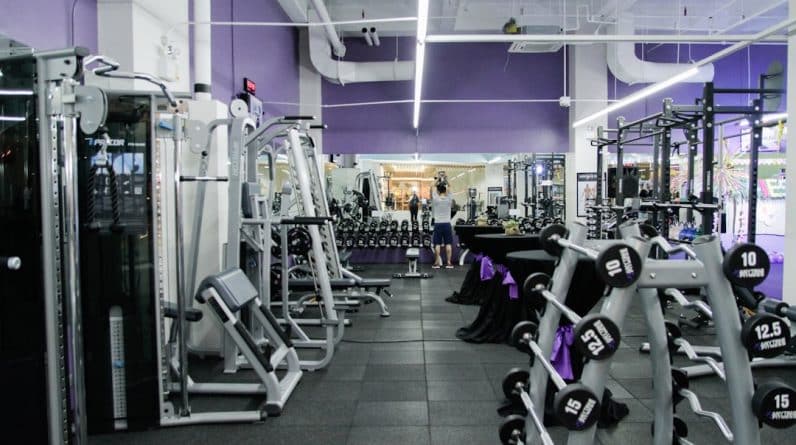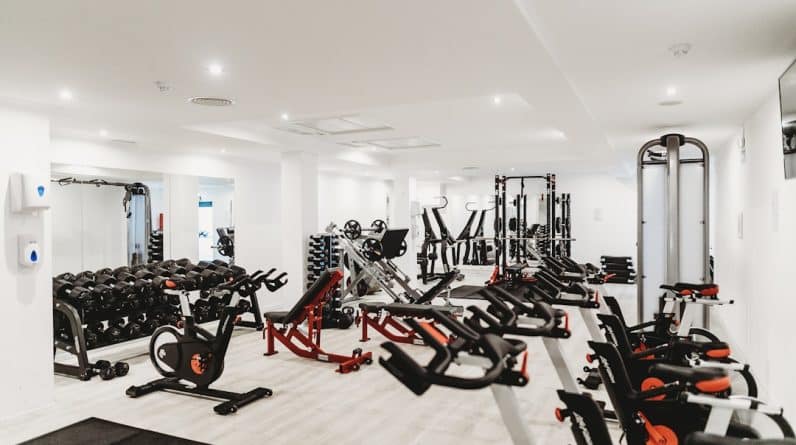
Membership numbers are the lifeblood of any gym. They not only reflect the current health of your business but also serve as a key indicator of its potential for growth and sustainability. When you look at your membership numbers, you’re not just seeing a figure; you’re witnessing the culmination of your marketing efforts, the effectiveness of your services, and the overall appeal of your gym.
A robust membership base can lead to increased revenue, allowing you to invest in better equipment, hire skilled trainers, and enhance the overall experience for your members. Conversely, low membership numbers can signal underlying issues that need to be addressed promptly. Moreover, understanding membership numbers goes beyond mere statistics.
It involves analyzing trends, demographics, and member engagement levels. You might find that certain times of the year see spikes in membership, such as January when New Year’s resolutions are fresh in people’s minds. Alternatively, you may notice a drop-off during summer months when many people are on vacation.
By recognizing these patterns, you can tailor your offerings and marketing strategies to align with member behavior, ensuring that you not only attract new members but also keep existing ones engaged and satisfied.
Key Takeaways
- Membership numbers are crucial for the success of a gym as they directly impact revenue and sustainability.
- Factors such as location, competition, and target demographic can significantly affect a gym’s success and membership numbers.
- Different types of gyms, such as boutique studios or large chains, have varying ideal membership numbers based on their business model and offerings.
- Strategies for increasing gym membership include offering promotions, creating a strong online presence, and providing excellent customer service.
- Retaining members is essential for long-term success, and can be achieved through personalized experiences, member engagement, and effective communication.
Factors Affecting Gym Success
Location, Location, Location
A gym’s location is one of the most significant factors contributing to its success. A high-traffic area with easy access can attract more members than a location tucked away in a less visible spot. Demographics of the surrounding area also play a crucial role; for instance, a gym catering to families can benefit from a location near schools or parks.
Facility and Equipment
The size and layout of the facility are also critical factors. A spacious gym with modern equipment and well-defined areas for different activities can create a more inviting atmosphere, making it more appealing to potential members.
Staff, Classes, and Programs
The quality of staff and trainers is another critical factor. A knowledgeable, approachable, and motivating team can make members feel supported and committed to their fitness journey. Offering diverse classes and programs, such as HIIT, yoga, or personal training sessions, can cater to a wider audience, attracting individuals with varying fitness levels and interests.
Ideal Membership Numbers for Different Types of Gyms

The ideal membership numbers can vary significantly depending on the type of gym you operate. For instance, boutique fitness studios that focus on specialized classes may thrive with fewer members—perhaps around 200 to 500—because they often provide a more personalized experience. These gyms typically rely on high-quality instruction and community engagement rather than sheer volume.
In contrast, larger commercial gyms may aim for thousands of members to ensure profitability, as they often operate on a model that includes lower prices and higher turnover rates. Understanding your gym’s niche is essential when determining ideal membership numbers. If you run a family-oriented gym, you might find success with a membership base that includes parents and children, which could range from 300 to 1,000 members depending on your offerings.
On the other hand, if you operate a high-end fitness center with premium services, you may aim for a smaller but more affluent clientele, perhaps around 500 to 1,500 members. Ultimately, aligning your membership goals with your gym’s unique identity will help you create a sustainable business model.
Strategies for Increasing Gym Membership
To increase your gym’s membership numbers, you need to implement effective strategies that resonate with potential clients. One approach is to offer free trials or introductory classes that allow newcomers to experience what your gym has to offer without any financial commitment. This not only lowers the barrier to entry but also gives potential members a taste of your community and facilities.
You might also consider referral programs that incentivize current members to bring friends or family along for workouts, creating a sense of camaraderie and shared experience. Another effective strategy is leveraging social media platforms to showcase success stories and testimonials from current members. By sharing before-and-after photos or highlighting personal achievements, you can inspire others to join your gym and embark on their fitness journeys.
Engaging content such as workout tips, nutrition advice, or live Q&A sessions can also help build an online community that attracts new members. Additionally, collaborating with local businesses or influencers can expand your reach and introduce your gym to new audiences who may not have been aware of it otherwise.
Retaining Members for Long-Term Success
While attracting new members is crucial, retaining them is equally important for long-term success. One effective way to keep members engaged is by regularly soliciting feedback and making improvements based on their suggestions. This shows that you value their opinions and are committed to enhancing their experience at your gym.
You might also consider implementing loyalty programs that reward long-term members with discounts or exclusive access to special events or classes. Creating a sense of community within your gym can significantly impact member retention as well. Organizing social events, challenges, or group workouts fosters connections among members and encourages them to support one another in their fitness journeys.
When individuals feel like they belong to a community rather than just a facility, they are more likely to remain committed to their memberships over time.
Utilizing Marketing and Promotions to Attract Members

Effective marketing is essential for attracting new members to your gym. You should consider developing targeted campaigns that highlight what sets your gym apart from competitors. Whether it’s unique classes, state-of-the-art equipment, or exceptional customer service, showcasing these features can draw in potential clients.
Utilizing digital marketing strategies such as search engine optimization (SEO) and pay-per-click advertising can also help increase visibility online. Promotions play a significant role in enticing new members as well. Seasonal discounts or limited-time offers can create urgency and encourage individuals to sign up sooner rather than later.
You might also consider partnering with local businesses for cross-promotions that benefit both parties—offering discounts to employees of nearby companies can expand your reach while providing added value to potential members.
The Role of Community and Networking in Gym Success
Building a strong community around your gym is vital for its success. When members feel connected not only to the staff but also to each other, they are more likely to remain loyal and engaged. Hosting events such as fitness challenges, workshops, or social gatherings can foster relationships among members and create an inclusive atmosphere where everyone feels welcome.
You might even consider forming partnerships with local organizations or charities for community service events that allow members to give back while strengthening their bonds with one another. Networking within the fitness industry can also provide valuable opportunities for growth. Attending industry conferences or joining local fitness associations can help you stay informed about trends and best practices while connecting with other professionals who may offer insights or collaboration opportunities.
By building relationships within the industry, you can gain access to resources that enhance your gym’s offerings and reputation.
Adapting to Changing Membership Trends
The fitness industry is constantly evolving, and staying ahead of changing membership trends is crucial for long-term success. For instance, the rise of virtual workouts has transformed how many people approach fitness; offering online classes or hybrid memberships that combine in-person and virtual options can attract a broader audience. Additionally, being aware of emerging trends such as wellness coaching or holistic health practices can help you diversify your offerings and appeal to individuals seeking comprehensive wellness solutions.
You should also pay attention to demographic shifts in your area; as populations change, so do their fitness needs and preferences. For example, an increasing number of older adults may seek low-impact classes tailored specifically for their age group. By adapting your services to meet these evolving demands, you position your gym as a relevant and responsive option for potential members.
In conclusion, understanding membership numbers is just the beginning of creating a successful gym environment. By focusing on factors affecting success, ideal membership targets for different types of gyms, effective strategies for attracting and retaining members, utilizing marketing techniques, fostering community connections, and adapting to changing trends, you can build a thriving fitness business that stands the test of time. Your commitment to continuous improvement will not only benefit your bottom line but also enhance the lives of those who walk through your doors seeking health and wellness.
If you are interested in learning more about successful health clubs, you should check out My Health Club Offers Top-Notch Fitness Services in Memphis, Tennessee. This article highlights the top-notch fitness services offered at a health club in Memphis, Tennessee, providing valuable insights into what makes a health club successful.
FAQs
What is the ideal number of members for a gym to be successful?
The ideal number of members for a gym to be successful can vary depending on factors such as location, size of the facility, and target market. However, a general rule of thumb is that a gym needs at least 1000-1500 members to be financially successful.
What factors contribute to a gym’s success?
Several factors contribute to a gym’s success, including the quality of equipment and facilities, the variety of classes and programs offered, the expertise of the staff, the gym’s location, and the overall customer experience.
How do gyms attract and retain members?
Gyms can attract and retain members by offering competitive pricing, providing high-quality services and facilities, offering a variety of classes and programs, creating a welcoming and inclusive environment, and providing excellent customer service.
What are some challenges that gyms face in maintaining a successful membership base?
Some challenges that gyms face in maintaining a successful membership base include competition from other fitness facilities, changing consumer preferences, economic downturns, and the need to continuously innovate and update their offerings to meet the needs of their members.
What are some strategies for gyms to increase their membership numbers?
Gyms can increase their membership numbers by offering promotions and discounts, partnering with local businesses or organizations, hosting events and challenges, utilizing social media and digital marketing, and providing excellent customer service to encourage member referrals.





